21 Simple Weather Experiments To Do With Children
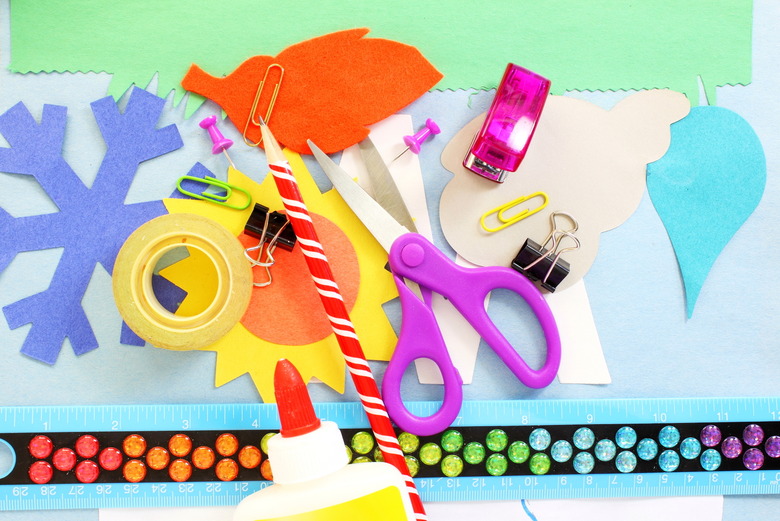
To young learners, science may not have the same obvious appeal as recess, free reading period or lunchtime. However, by studying the weather — a natural phenomenon children encounter every day — at home, you can pull sky-high scientific processes down to earth. Soon enough, there are convection currents in the living room, precipitation in the kitchen and the water cycle marked on the washroom window. Follow along with these simple and fun weather experiments you can do at home.

Tornado in a bottle
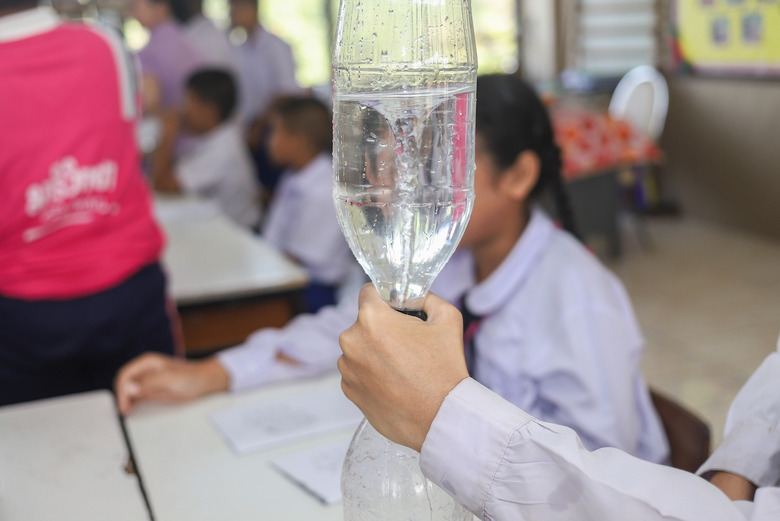
For this classic weather demonstration, you will need two plastic 1-liter bottles, a pitcher of water, a metal washer and duct tape. First, clear your bottles of any labels. Then, pour water from your pitcher to nearly the top of one of the two bottles. Next, place a metal washer onto the mouth of the bottle. For best results, choose a washer that fits snuggly. Grab the second bottle and tape the two together using duct tape, then flip them over. A tornado-like water vortex will retreat from the top bottle to the bottom. Add color with lamp oil, bubbles with dishwashing soap or mock debris with small styrofoam balls. Educate your child on tornadoes and other extreme spring weather phenomenons .
Weather-predicting pine cones
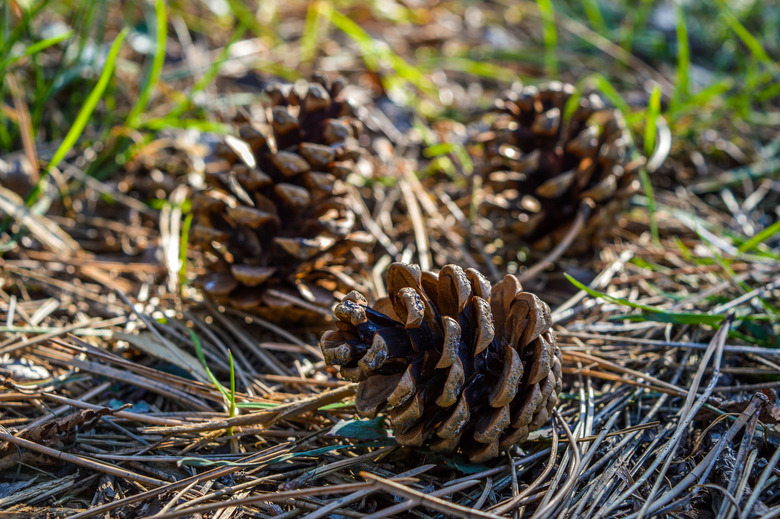
Best save this cold-weather science experiment for autumn. Trek to your backyard or nearby park to collect two freshly fallen pine cones. At home, place each pine cone into a jar. Fill just one jar with water. Note the time and observe how the two pinecones react to their respective environments, one dry and another submerged in water. Soon, the pine cone in water should tighten and close while the dry pine cone may exhibit seemingly no changes. The reason? Pine cones close in wet or humid weather to prevent the washing away of their seeds. In dry weather, the pinecones open so that their seeds may be picked up and carried by the wind. Hang a pinecone somewhere outdoors and watch it predict the weather .
Lightning in a pie pan ...
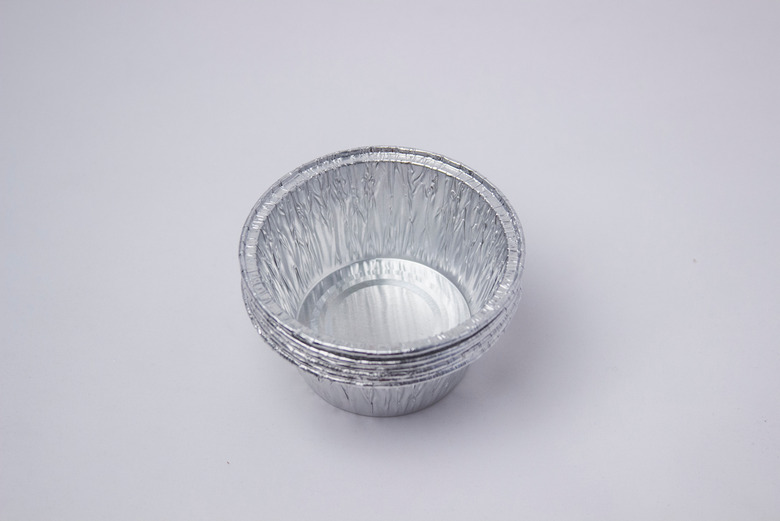
Lightning, weather's most photogenic feat , can, like rhubarb or cherry, be cooked up in an aluminum pie pan . First, gather the other necessary materials: a small piece of wool, a styrofoam plate, a pencil with a new eraser and a thumbtack. From underneath the pie pan, push the thumbtack through its center from the bottom. Next, push the eraser end of the pencil into the thumbtack. Place the styrofoam plate upside down on a table and rub underneath it with the wool for a few minutes. Quickly, using the pencil as a handle, pick up the aluminum pie pan and place it on top of the styrofoam plate. Prepare for a shock as you touch the pie pan with your hand. Now, turn off the lights and touch the pie pan again. See any sparks? That's static electricity. The negative charges from your fingers, like the clouds in the sky, are attracted to the positive charges in the ground.
… Or in your mouth
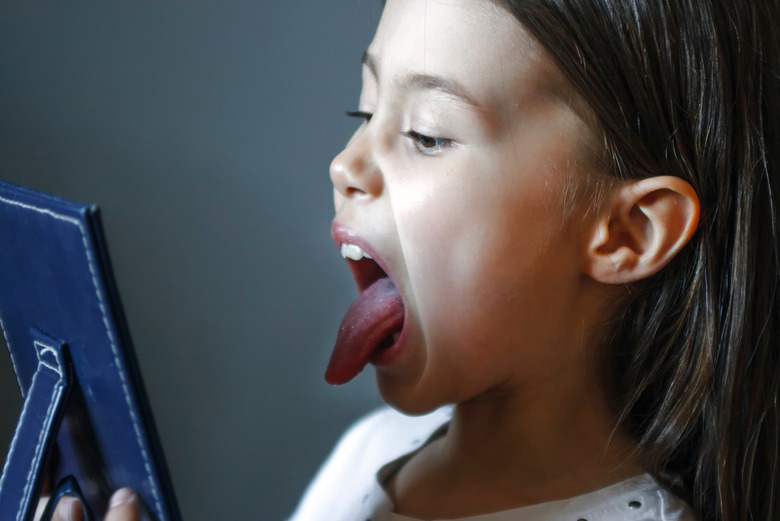
If without a pie pan or styrofoam plate, no worries, make a lightning bolt in your mouth. Grab some minty-flavored lifesavers before heading into a dark room and standing in front of a mirror. Wait a few minutes until your eyes adjust to the lights, keep your mouth open and then place the lifesaver in your mouth and break it with your teeth. Note: Be careful not to bite down too aggressively as to damage a tooth. Should the mint break into pieces, you should see bluish flashes of light. In this case, the sugars in the mint release little electrical charges that are attracted to the oppositely charged nitrogen in the air. The two meet and react in a tiny spark. For another food experiment, place a grape in a microwave and watch it explode .
Bending water
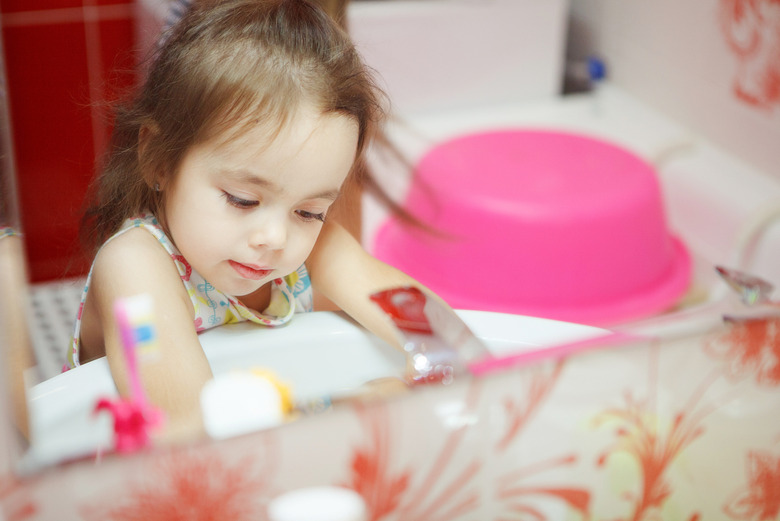
All you need for this water-bending trick is water, a comb and a piece of wool or nylon. Rub the comb against the fabric, then hold it near and parallel to a trickle of water from a faucet. The negatively charged comb will attract positively charged water, bending the water toward the comb.
Convection current thunderstorm in a plastic container
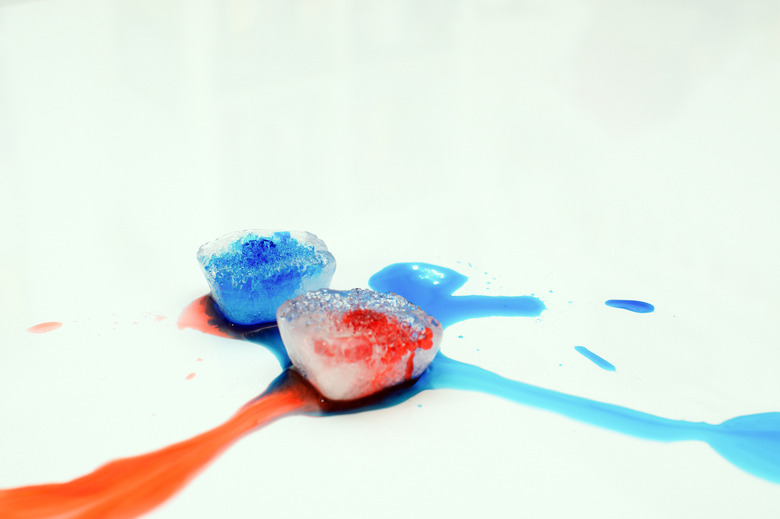
Gather a shoebox-sized clear, plastic container, ice cubes and red and blue food coloring. Freeze water dyed blue with food coloring until it turns to ice cubes. Fill the plastic container two-thirds with lukewarm water and let sit for a minute. Place one blue ice cube at one end of the plastic container and add three drops of red food coloring to the water at the other end. Soon, the cool blue water will sink as the warmer red water rises. Like the warm red water, bodies of warm air in the sky are forced to rise when approaching a cold front, causing a thunderstorm. While water falls during a thunderstorm, other crazy things have rained from the sky before too.
Portable cloud
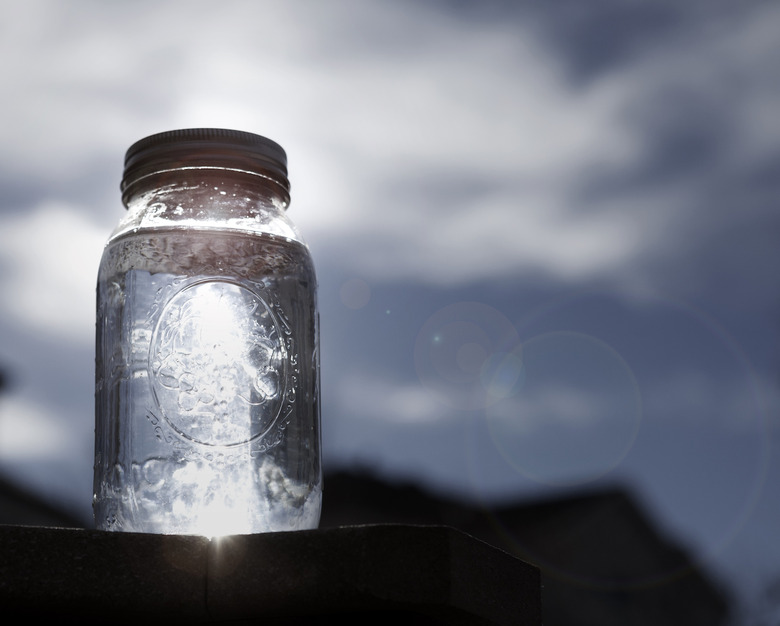
Catch a falling cloud and put it in a mason jar. For this, you will need a rubber glove, matches, a rubber band and a gallon-sized jar. First, pour 100 ml of cold water into the jar. Swish the water around the jar's sides to ensure enough moisture to form a cloud. Then, put a rubber glove on one hand and light two matches. Wait a second for the still-lit matches to smoke, then drop them into the jar. Insert your gloved hand into the jar and cover the rim with the excess glove fabric or a rubber band. Pull your hand up and down in the jar. As you lift your hand, the volume in the jar increases while pressure and temperature decrease. This causes the water vapor to condense onto the smoke particles, forming a cloud.
Conduction junction
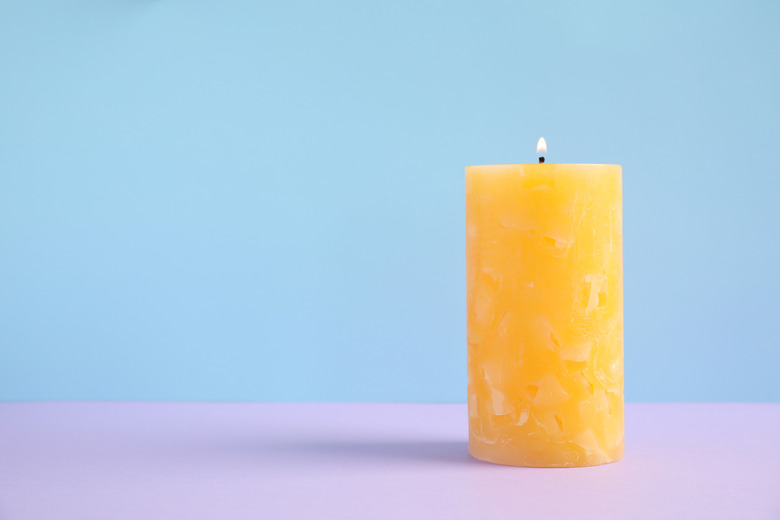
Conduction is the transfer of heat by the collision of molecules moving rapidly. To observe this at home, grab a paper cup, a lit candle and serving tongs. Fill two-thirds of the paper cup with water. Using the tongs to securely carry it, hold the cup about 2 inches above the candle's flame. Allow the water to steam, but notice the paper cup never catches fire. Here, the paper cup acts as a conductor, transferring the heat from the air to the water. When the earth's surface warms, heat is similarly transferred from the earth to the air right above it.
Measure the sun with a pinhole viewer

To build a simple pinhole viewer, cut a 3/4-inch by 3/4-inch square from the center of a piece of cardboard. Cover the square with aluminum foil and tape, then puncture a small hole in its center using a pin or thumbtack. To measure the sun, head outside. Hold the pinhole viewer so the sunlight passes through the hole and falls onto a white sheet laid on the ground behind you and the viewer. Measure the diameter of the projected sun on the paper and distance from the pinhole to paper. Divide those two and multiply the answer by the earth's distance from the sun (93,000,000 miles), and there you have it, the diameter of the sun. Keep an eye toward the sky all year for must-watch astronomical events from supermoons to eclipses.
Make a rainbow
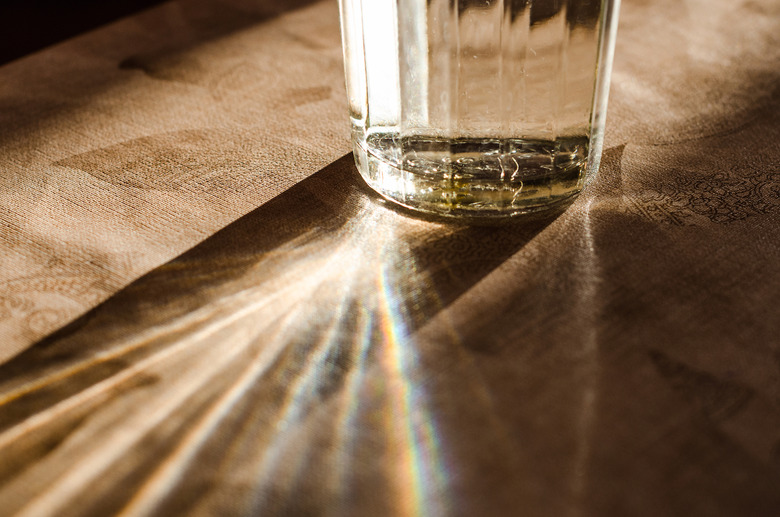
Demonstrations don't get much simpler than this. You have likely even found yourself conducting this experiment on accident on a warm and sunny day. Fill three-fourths of a glass with water and move all your supplies (the glass and a white sheet of paper), toward a sunny window. Place the paper on a nearby table or windowsill and hold the water glass above it. Watch as the sunlight passes through the glass, bends and forms a rainbow on the blank page. In the sky, rainbows form when sunlight refracts or bends just like it did when it passed through the water and onto your paper. Do not be fooled, there are more colors to a rainbow than the six or seven you can see with your eyes. That's just one weather myth to stop believing .
Homemade thermometer
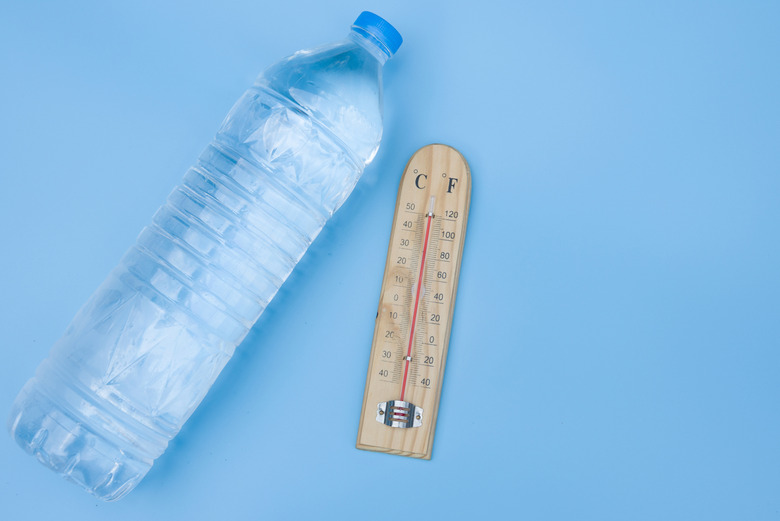
While this simple thermometer won't measure the exact temperature, it will demonstrate temperature change. All you need is a plastic water bottle, modeling clay, a clear straw, food coloring and rubbing alcohol. Note that passing on plastic water bottles or straws entirely are two ways to be more sustainable , so be sure to recycle all plastic materials after completing the science experiment. Now, back to building your thermometer. Mix equal parts (2 1/2 fluid ounces each) cold water and rubbing alcohol then pour into a 20-fluid-ounce water bottle. Next, add a few drops of food coloring. Insert the straw into the bottle so it hovers a few inches above the bottom. Secure the straw in place with modeling clay and watch as water soon rises into the straw. As you place the homemade thermometer in cold or warm water, water will rise and fall in the straw.
Water cycle in a bag
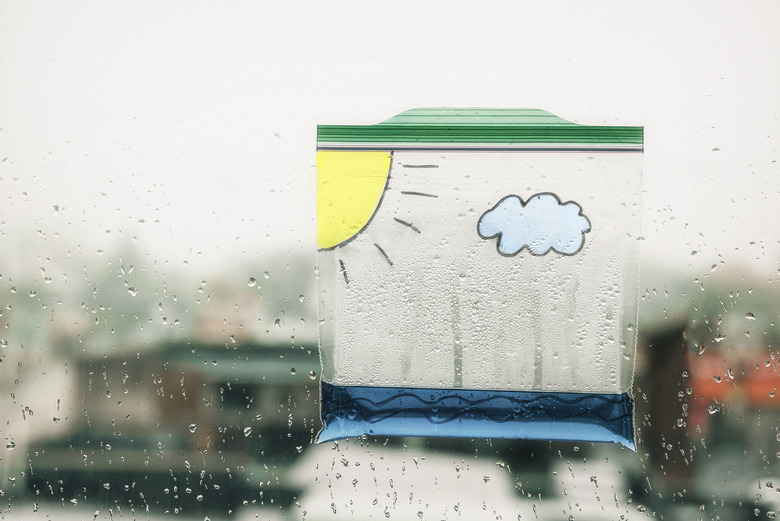
Zip-lock bags are for more than school lunches and work-day snack breaks. Using a permanent marker, allow kids to draw a sun, clouds and ocean waves onto a plastic snack bag. Fill the bag with just a fourth cup of water and add a few drops of blue food coloring. Seal the bag and hang it against a window using tape. Soon, the sun's heat will cause the water to evaporate, cool and then condense into small rain-like droplets. The same occurs in nature. The sun heats beautiful bodies of water , causing the vapor to rise and, when it reaches cooler air, condense to form clouds. Clouds full of water then release water in the form of precipitation.
Water cycle in a jar
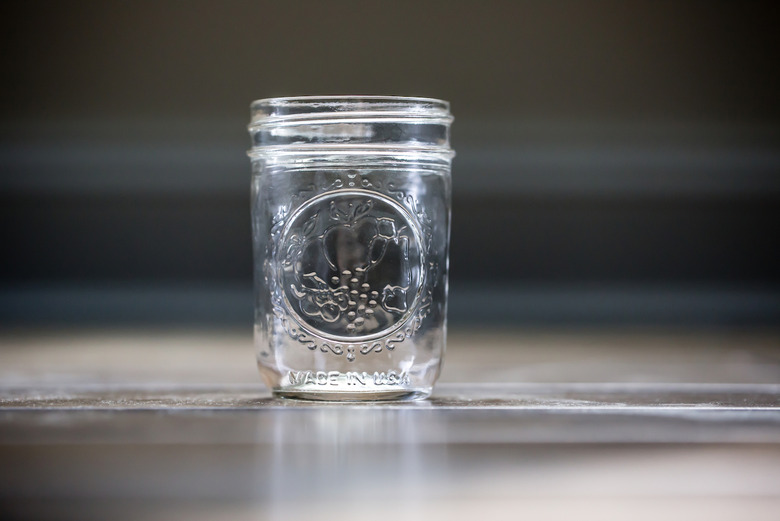
If jars are more your speed than bags, you can also demonstrate the complete water cycle in a jar. You will need a repurposed glass jar , a ceramic plate, four ice cubes and hot water. First, pour 2 inches of hot water into the jar. Then, cover the jar with the ceramic plate face up. Take a three-minute pause before putting the four ice cubes atop the plate. Like in the bag, the cold plate causes the moisture in the warm air inside the jar to condense into water droplets. To mix up the experiment, try testing different plate materials or water temperatures. Have children hypothesize which they believe will work best.
Paper plate wind vane
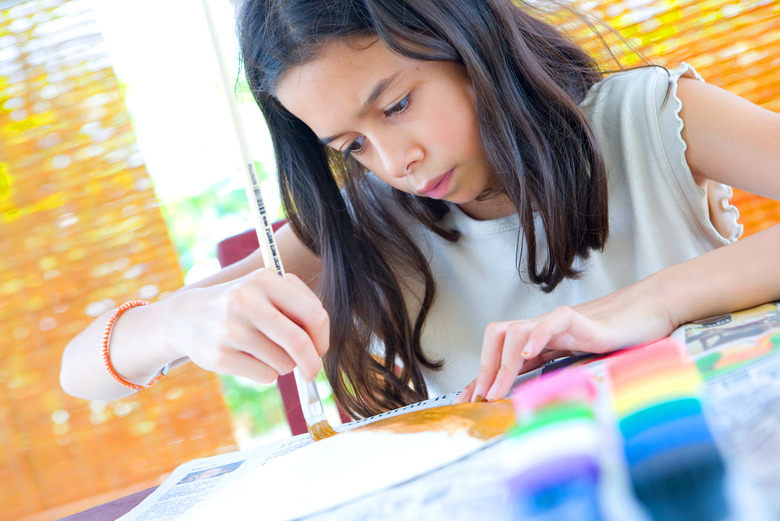
Energy in motion, like wind, is called kinetic energy. Changes in air pressure produce winds all around the world that can be measured using wind vanes. To build your own, gather two paper plates, a plastic straw, a pencil with a new eraser, a pin and modeling clay. First, cut parallel slits on each end of your plastic straw. Next, on sturdy paper, draw and cut out the shapes necessary to make an arrow; two triangular front-ends and two more two-pointed tails. Stick the shapes through the slits on each end of the straw. Gently press a pin through from above through the straw's horizontal center and into the pencil eraser, allowing enough room for the straw to spin. Next, flip a paper plate over and mark its center and the four cardinal directions. Use the pencil to poke a hole through the plate's center and into a mound of modeling clay placed on another paper plate below. Mold the clay around the pencil to secure it in place, then glue the two plates' rims together. Your wind vane is now ready to head outside for wind-measuring fun.
Crystal snowflakes
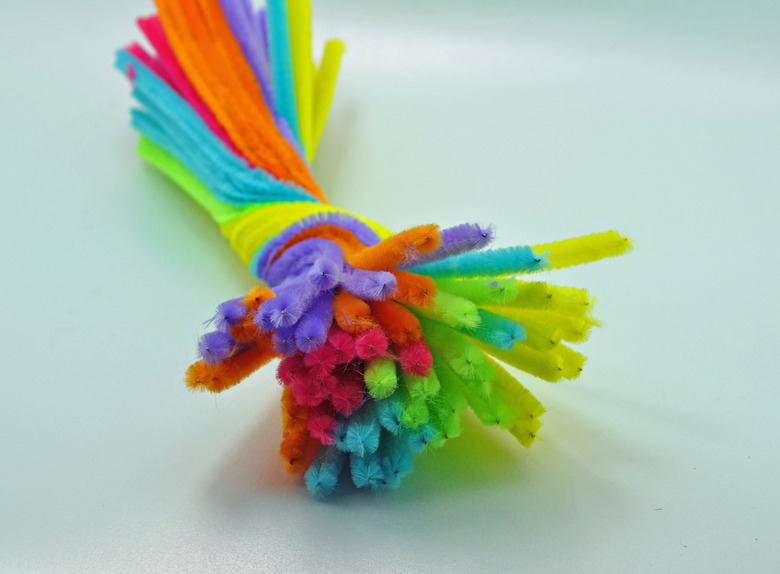
While residents of the snowiest of states may not be in the market for any more snow, others can experience the magic at home. All you need is a string, a wide-mouthed jar, white pipe cleaners, boiling water, borax and a pencil. Cut your pipe cleaners into three sections of the same size, then twist them at the center to form a six-sided star. Next, fill a jar with boiling water. For each cup of water added, add 3 tablespoons of borax. Stir well and then add a few drops of blue food coloring. Then, after tying your pipe-cleaner snowflake to a pen with string half the length of your jar, lower it into the solution, allowing the pen to rest on the mouth of the jar. Leave overnight and wake up to crystals all around your snowflake.
Backyard sundial
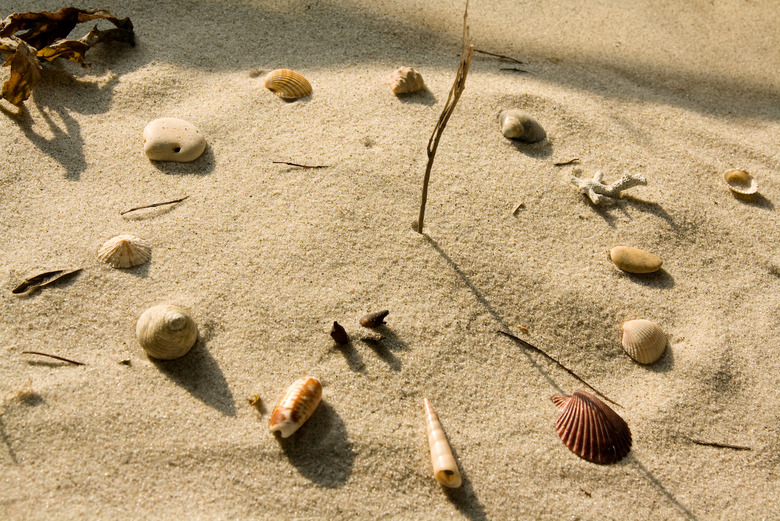
Before even beginning this experiment, send kids on a hunt for a 2-foot-long stick. Once found, push the stick vertically straight into the grass, earth or sand below (this experiment makes for a safe and fun beach day activity.) Starting early in the morning, mark the place where the stick's shadow falls using a pebble or seashell. Come back every hour and mark the shadow's progress using more pebbles. Consider labeling each rock with chalk or a sticky note to tell what time you placed it down. Because Earth is constantly rotating and revolving around the sun, the stick's shadow changes place. By the end of the day, as the earth completes its rotation, you will have a complete, hourly marked sundial.
Colorful convection currents
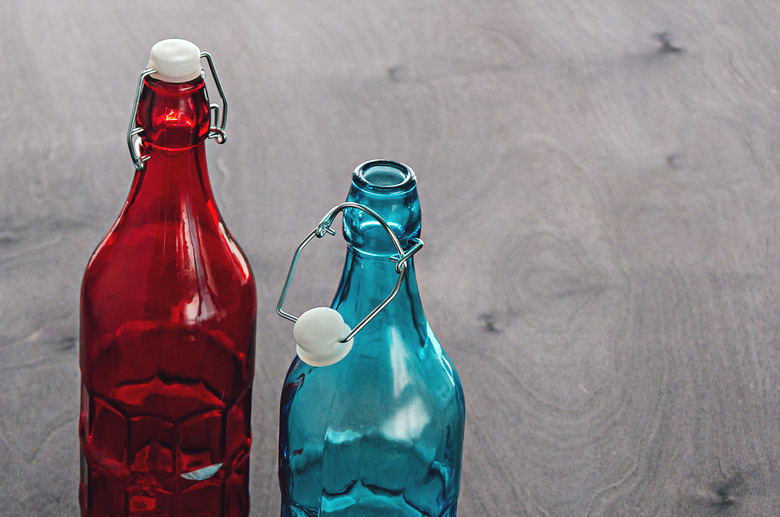
This experiment requires a little sleight of hand, and consequently, a bit more adult help. You will need two wine-bottle-shaped containers, food coloring, water and a single playing card. Fill both bottles to the brim with water, one hot and one cold. Add yellow food coloring to the warm water and blue to the cold water. Now, prepare for potentially major spillage. Using the playing card as a stopper, turn the hot water bottle upside down and place it atop the bottle with cold water. Slide-out the card separating the two liquids and watch as the colors stay put in their original jars. Re-do the experiment, this time with the cold bottle placed on top of the hot bottle. Notice the colors mix and turn green. This is another case of convection as warm and cold air masses collide. During the first trial, the cold blue water stayed on the bottom and didn't mix with the yellow. Like during the winter, higher density cold air was trapped close to the earth with a warmer blanket of air sitting on top. Trapped between is a layer of stagnant, often polluted air known regionally as the brown cloud. To help stem pollution, improve your carbon footprint .
Ping pong pressure
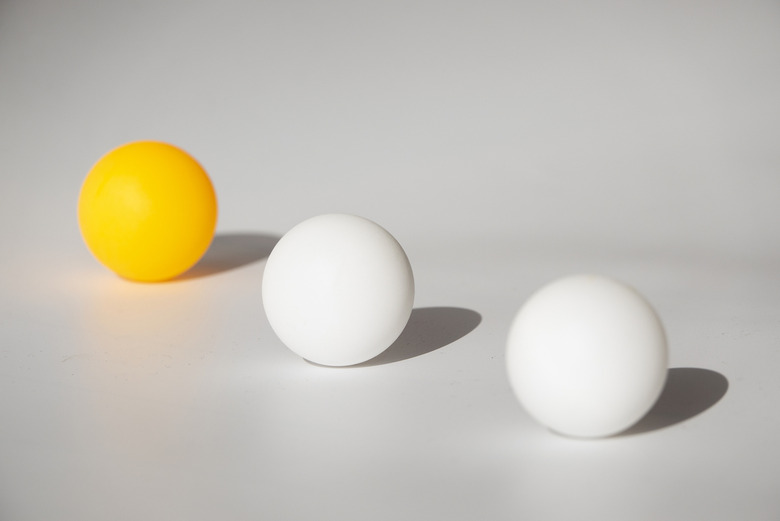
Gather 'round your hairdryer, two pingpong balls, two straws and some model clay. Place each straw into a lump of clay so they stand upright. Next, mold more clay around the base of the pingpong balls and place each on top of a straw. Turn on the hairdryer and aim it directly at the few inches in between the two pingpong balls. The principle that draws the two pingpong balls together gains its name from Daniel Bernoulli, a Swiss mathematician and physicist. Bernoulli observed that fast-moving air creates an area of low pressure. Therefore, the low-pressure area formed between the balls allows for them to be pushed toward each other by higher pressure outside them.
Puffy paint clouds

More arts and crafts than an experiment, this weather activity still has much your child can learn from. Using either store-bought or homemade puffy paint, have children paint the various sorts of clouds they see in the sky — stratus, cirrus, cumulus and cumulonimbus, etc. Teach them the names, shapes and tips for telling them apart during the day. Take the time to get into the science of common weather proverbs like "the higher the clouds the finer the weather."
Hurricane in a bowl
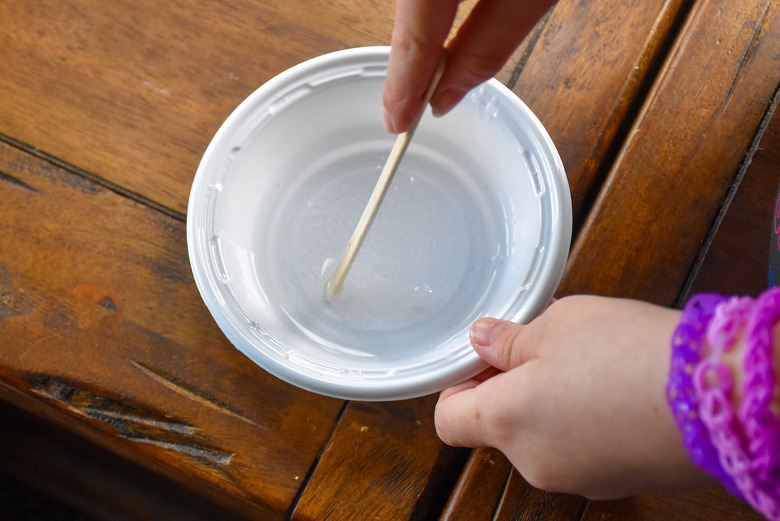
This doable demonstration requires no more than a large clear bowl, water, a spoon and drops of food coloring. Fill the bowl three-fourths of the way with water and stir. As the water begins to rotate, add a few drops of food coloring to the bowl's center. The coloring will spiral and spin in the shape of a hurricane before dispersing as the water rotation slows to a stop. Like a hurricane, the colors disperse in bands that circle around the system center. Unlike in this demonstration, a hurricane's spiral movement is not started by the stir of a spoon. Hurricanes form when warm, moist air over the ocean rises upward. Then new air moves in and warms and rises, creating a constant movement and storm spiral capable of turning to extreme natural disasters .
Snowstorm in a jar
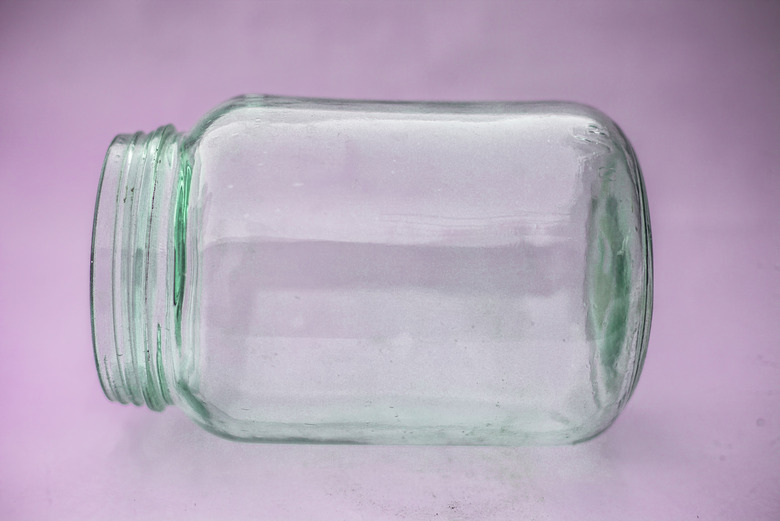
For this final project, gather baby oil, white paint, blue food coloring, glitter, Alka-Seltzer and a mason jar. Fill the jar three-fourths of the way with baby oil then add glitter and food coloring. In a separate container, mix water and a few tablespoons white paint and add the mixture to the jar. Finally, drop an Alka-Seltzer tablet inside and watch as the snow falls. Though impressive for an at-home science experiment, this small flurry cannot compare to the most insane winter storms in U.S. history .
More From The Active Times
21 Simple Gardening Tips for Beginners
Dressing In Layers Keeps You Warm and 15 Other Cold Weather Myths, Debunked
35 Healthy Habits That Keep You Young
Hidden Sources of Bacteria in Your Home
Peak Cherry Blossom Season in America Told Through Photos
- About iGameMom
- DIY Computer Coding Camp at Home
- Geometry Games Improving Spatial Reasoning Skills
- Privacy Policy

- Free Resources
- Computer Coding for Kids
- Engineering Kids
- Math for Kids
- Science for Kids
- General Science
- Good Movies for Kids
- YouTube Videos for Kids
10 Hands-On Weather Science Experiments for Kids
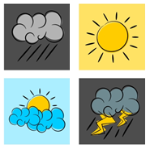
We shared ideas for seed science experiments for kids last week. Today we will share weather science experiments for kids to do in the spring. As winter comes to the end, the weather is changing in so many different ways, warmer temperatures, longer days, more or fewer rains, melting snows, and strong winds, … there are many fun weather activity ideas to do with kids. Here are some on my list.
Hands-on Weather Science Experiments for Kids
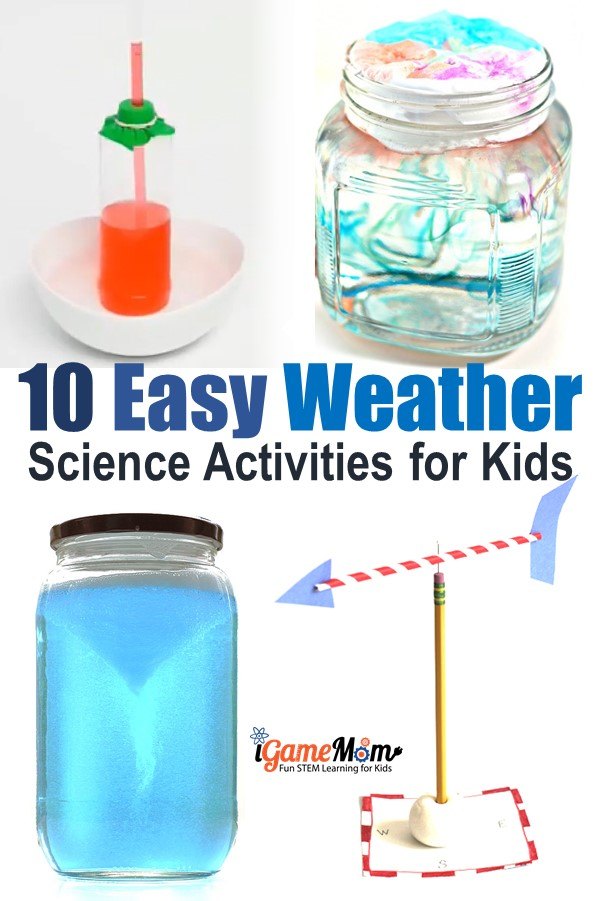
All ideas here are hands-on, meaning kids will make something. But all are simple to do, with no need for special materials.
Make a weather vane to show wind direction
Make an anemometer to measure wind speed.
Create a thunderstorm in your kitchen
Make rain in a jar
Make a rain gauge to measure rainfalls
Create a rainbow at any time – don’t have to wait for the rain.
Create some tiny lightning to see how lightning is formed
Create a tornado in a jar or in a bottle
Watch the cloud form in a bottle or in a jar on your kitchen counter is a fascinating experience for young children

Make a thermometer of your own with simple materials you already have at home Do you have suggestions on weather science experiments and weather activities for kids?
I hope you like these science experiments. Doing science at home is not just for fun, it is also to cultivate child’s interest in science and help them grow scientific thinking skills. I encourage you to follow the scientific steps while working with kids on these fun activities. I outlined the steps and developed this Science Experiment Recording Sheet. I highly recommend using it, even with young children. They can draw pictures if they can’t write. It is the process that is important, starting with questions and hypotheses.
Looking for more easy and fun science activities for kids to do in Spring? Check out 9 Seed science experiments for kids . For more nature science activities, check out 100+ Natural Science Activities for Kids and 7 Wind Science Activities for Kids
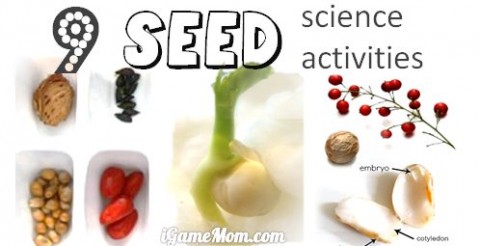
(photo credit http://www.freedigitalphotos.net/)
Next post: DIY Computer Coding Camp at Home
Previous post: 500 Science Activities for Every Month of the Year
I just finished reading your article on weather science experiments for kids, and it’s fantastic! The hands-on experiments you shared are not only educational but also incredibly fun for children. It’s great to see how you make learning about weather engaging and accessible. Thank you for providing these creative ideas to spark curiosity and exploration. Well done!
Leave a Comment
Save my name, email, and website in this browser for the next time I comment.
This site uses Akismet to reduce spam. Learn how your comment data is processed .
Welcome to iGameMom — Fun STEM learning ideas for kids. Math, science, tech, engineering activities kids love!

Popular Posts
- 3 Coding Games to Learn Shapes and Geometry with a Cool Coding Toy
- RGB Color Mixing with Coding Spring Template
- Coding Game Improving Kids Problem Solving Skills
- Coding Game for Critical Thinking Skills

Follow iGameMom!
Best STEM Learning Ideas
- 70 Autumn Science Activities for Kids to Do This Fall
- 9 Back to School STEM Challenges
- 10 Cool Backyard Science Experiments for Kids
- DIY Nature Science Summer Camp at Home
- Patriotic Dinner Party STEM Challenge for Kids using Toothpicks
Best Learning Resources
- Best Learn Coding Websites and Apps for Kids
- 21 Best Math Apps Teaching Math Concepts with Games
- Best Vocabulary Learning Tools for Kids
- Best Learning Tools For Kids to Learn Counting
- Best Spelling Learning Tools for Kids on iPad and Other Tablets
- Skip to primary navigation
- Skip to main content
- Skip to primary sidebar

- FREE Experiments
- Kitchen Science
- Climate Change
- Egg Experiments
- Fairy Tale Science
- Edible Science
- Human Health
- Inspirational Women
- Forces and Motion
- Science Fair Projects
- STEM Challenges
- Science Sparks Books
- Contact Science Sparks
- Science Resources for Home and School
Weather Science Experiments for Kids
January 25, 2023 By Emma Vanstone 2 Comments
Today’s round-up is full of great weather science experiments and investigation ideas. Learn about extreme weather with a tornado in a jar, record rainfall over a period of time, create a water cycle in a bag and lots more easy ideas for learning about the weather.
Observing the weather is a great way to practice recording and displaying data and learning about the weather and how it changes daily.
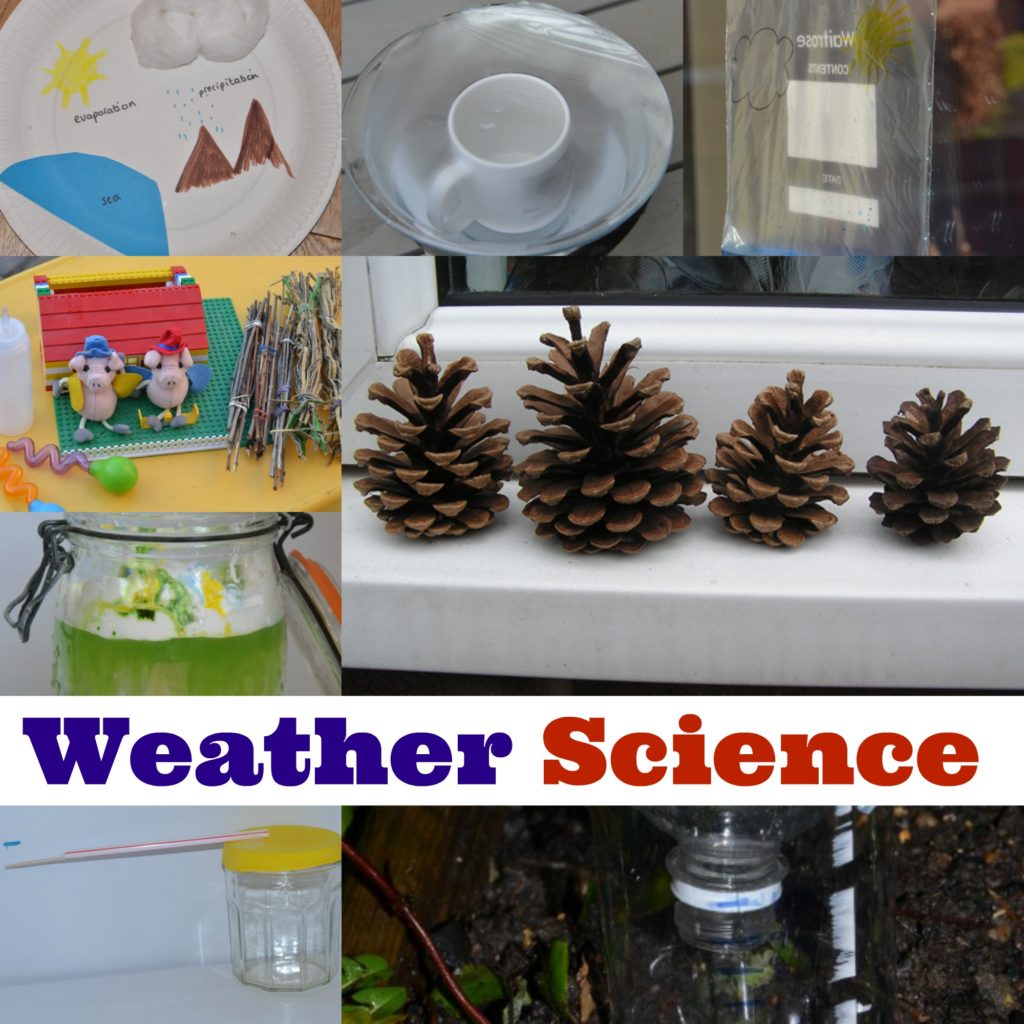
Weather Science Experiments
How to measure rainfall.
A simple rain gauge is an easy way to measure rainfall. Don’t forget to record the results and empty it each day. Use my free rainfall recording sheet , or design your own!

Find out how hard it’s raining with Rainy Day Mum.
Wind Experiments
If you want to get crafty, try making a pinwheel like this one from Red Ted Art. You should find it spins more on windy days.
Inspiration Laboratories makes an excellent model hurricane .
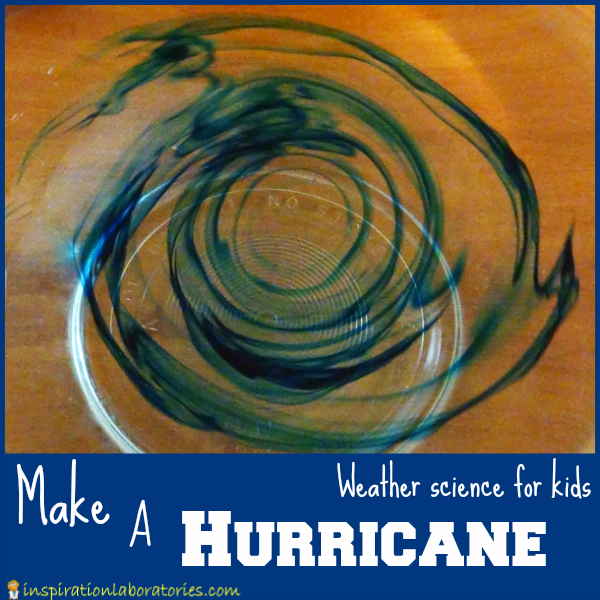
Find out which direction the wind is moving in with my easy homemade wind vane .
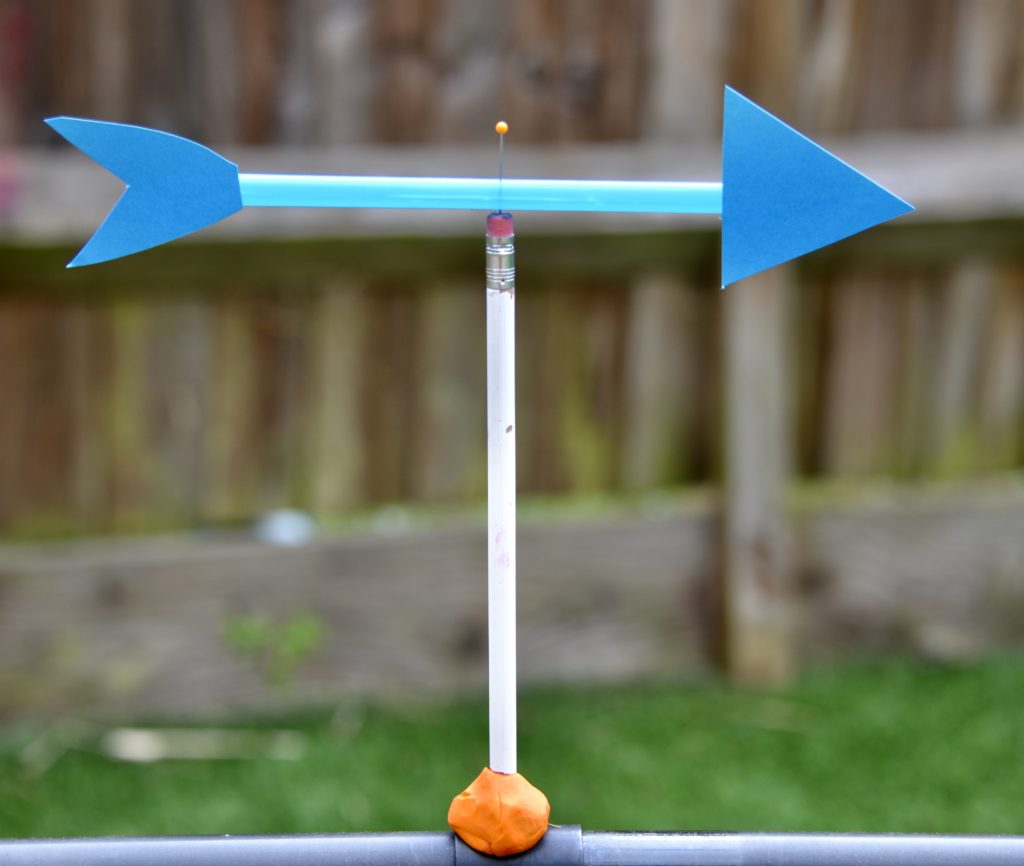
Storm in a Jar
We made a storm in a jar to demonstrate storms on Jupiter in This Is Rocket Science .
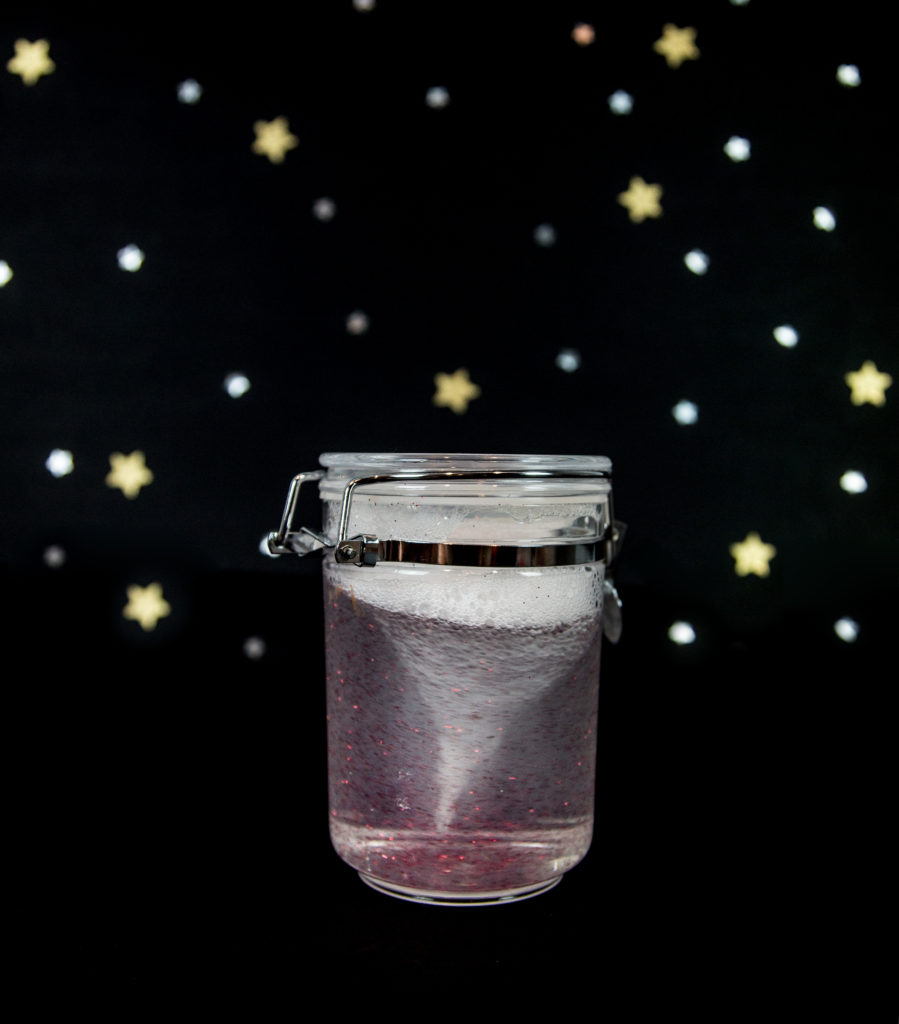
Did you know that there are over 1000 tornados in the United States annually ?
I’ll blow your house down
Can you blow down the Three Little Pigs House ? Or build the pigs a house that won’t fall down?

Build your own anemometer to measure wind speed.
Did you know the effects of increasing wind speed are measured on the Beaufort scale ?
Water Cycle Investigations
This fun mini water cycle is a great way to illustrate the water cycle.
We love this LEGO water cycle model from Edventures too.
Find out how water evaporates in this easy activity using sand.
Set up a water cycle in a bag!
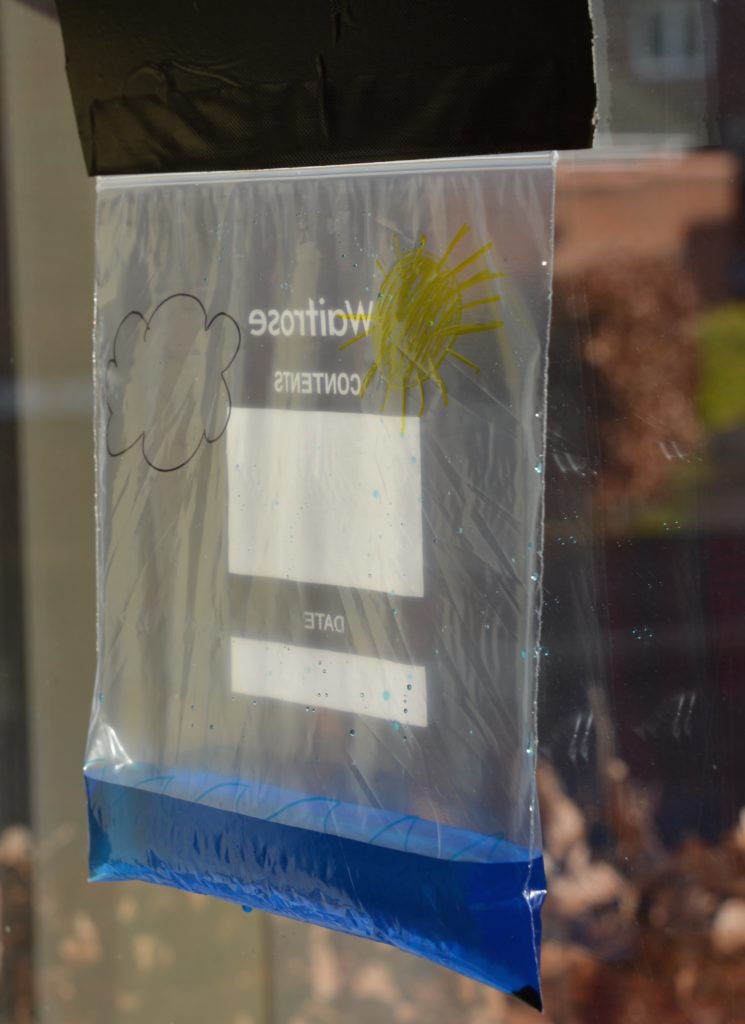
Homemade Weather Station
Did you know you can make a straightforward weather station using pinecones ? This is a great science activity for young children who can easily apply the knowledge when they see pinecones outside too.
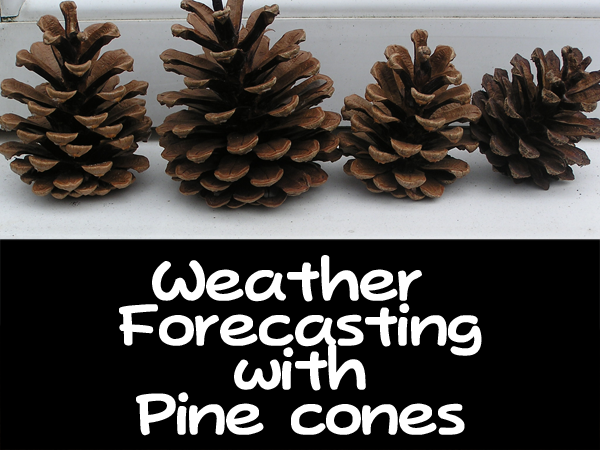
More weather science for kids
Make a simple barometer to measure air pressure. A homemade barometer is a great way to learn about air pressure visually.

Creative Family Fun has some lovely sun prints that are an excellent weather activity for a sunny day.
These weather sensory bottles would be great for younger children from Twodaloo.
Find out how clouds form an easy rain cloud in a ja r demonstration.
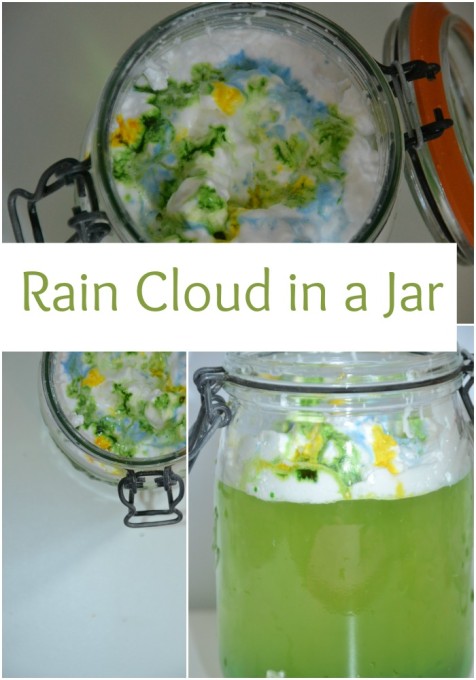
Can you think of any more weather science themed activities ?

Why is the sky blue?
When light from the Sun enters the atmosphere, it contains all the colours of the rainbow, which appear as white light. Gases in the atmosphere make the light slow down, change direction and scatter. Blue light is scattered the most, which is why we see the sky as blue.
What makes a rainbow?
It is the refraction of light which makes the sky look blue. Rainbows are formed in a similar way, except its rain or another water source ( you can demonstrate this with a hosepipe ) which makes the light we see to be split up into its constituent colours.

We only see rainbows when the Sun is behind us, with water droplets falling in front. You can make a rainbow with a prism or with a hosepipe by standing with your back to the Sun and spraying water into the air.
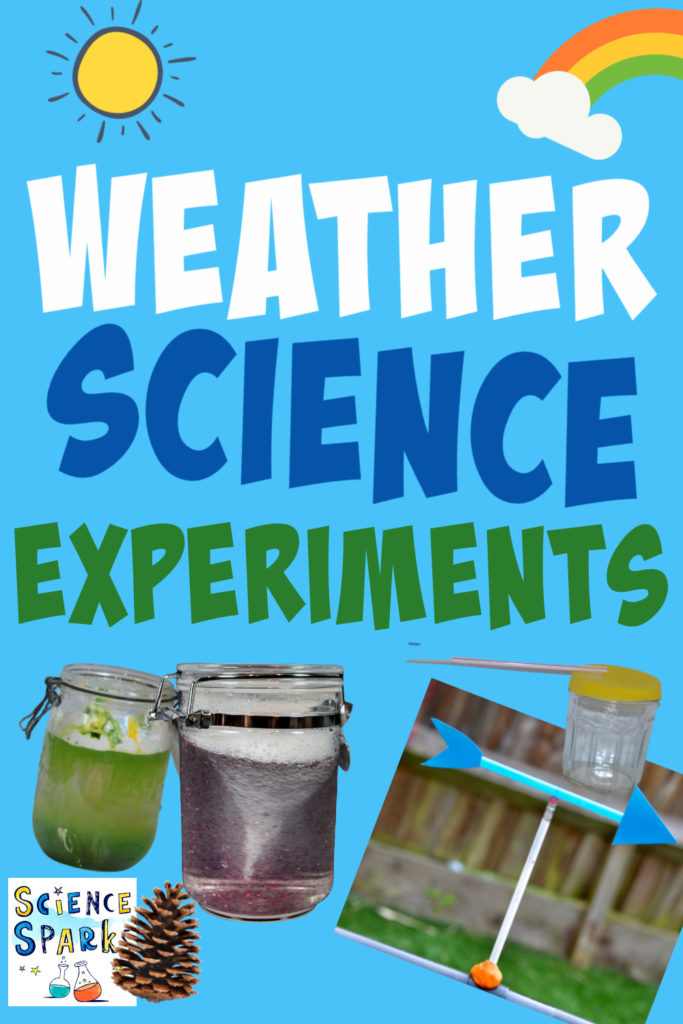
Last Updated on January 26, 2023 by Emma Vanstone
Safety Notice
Science Sparks ( Wild Sparks Enterprises Ltd ) are not liable for the actions of activity of any person who uses the information in this resource or in any of the suggested further resources. Science Sparks assume no liability with regard to injuries or damage to property that may occur as a result of using the information and carrying out the practical activities contained in this resource or in any of the suggested further resources.
These activities are designed to be carried out by children working with a parent, guardian or other appropriate adult. The adult involved is fully responsible for ensuring that the activities are carried out safely.
Reader Interactions
April 11, 2014 at 10:22 am
Love the “make a hurricane” idea!
Leave a Reply Cancel reply
Your email address will not be published. Required fields are marked *
- Skip to main content
- Skip to primary sidebar

This post might contain affiliate links. Click here for more information . Thanks for visiting!
30+ Preschool Weather Activities
March 9, 2019 by Rachel Cooper
Last Updated on March 6, 2024 by Sheryl Cooper
Inside: Get inspired with these preschool weather activitie s – including dramatic play, fine motor, art ideas, and more.
Entering the spring months, there are a lot of weather changes happening.
Our days here in Oregon are unpredictably rainy, sunny, cold, or windy.
This provides us with the perfect time to discuss the different types of weather, as children get to see so many examples of it within their natural environment!
Below is a compilation of weather themed art activities, creative sensory bins, fun dramatic play area ideas, and more for your preschool weather theme.
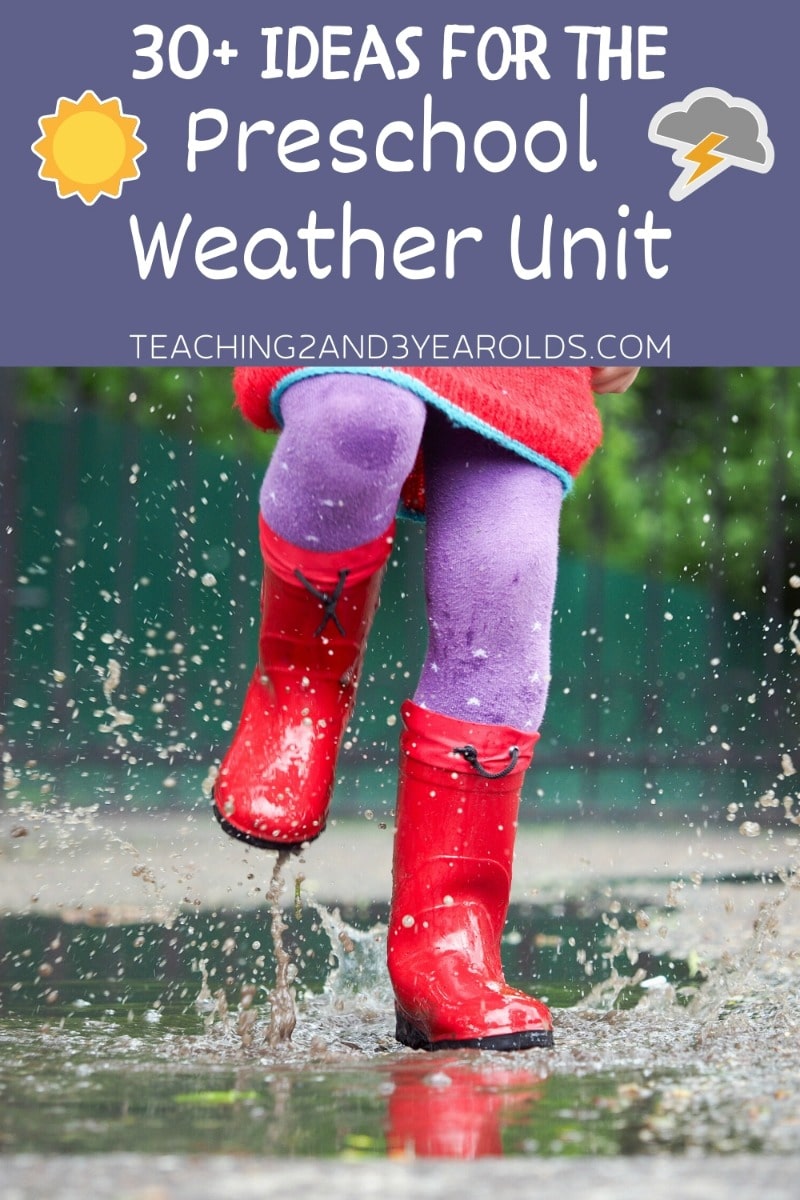
Art Activities
Gravity Rain Cloud Painting – Drip watercolors onto vertically standing paper to create the appearance of rain coming from a cloud. (A Little Pinch of Perfect)
Mosaic Paper Rainbow – Provide squares of colored paper and glue for preschoolers to arrange into a mosaic rainbow. (Daisies and Pie)
Rainy Window – Paint with watercolors onto the back of a baking sheet to make a rainy window print. (Play Teach Repeat)
Umbrella and Rain with Bubble Wrap – Paint bubble wrap blue to look like raindrops plopping down onto an umbrella. (123 Homeschool 4 Me)
Thunderstorm Art – Toddlers will glue lightening bolts and rain drops on top of gray paint to create a storm. (Buggy and Buddy)
Symmetry Clouds – Add white paint to a piece of paper and fold it in half to create a mirrored cloud shape. (Teach Beside Me)
Snowball Painting – Clip pom-poms onto clothespins for toddlers to dip into white and blue paint and stamp snow. (Brilliant Little Ideas)
Paper Plate Umbrella – Cut a paper plate in half to be decorated as the top of an umbrella. (The Chirping Moms)
Raindrop Sun Catcher – Cut a blue outline out of paper and attach to contact paper to be filled with blue tissue paper. (A Day In First Grade)
Puffy Paint Clouds – Mix shaving cream and glue to paint onto blue paper as clouds. (No Time For Flashcards)
Painting with Rain – If you live in a rainy area, leave pieces of paper with powdered tempura paint outside for the rain to mix with the powder and create paint. (Tot School)
Fine Motor Activities
Sun Scissor Activity – Preschoolers will strengthen cutting skills with these printable scissor cards.
Rain Storm Sticky Wall – Make a contact paper sticky wall with clouds for toddlers to stick raindrops onto. (Mama of Littles)
Weather Do-a-Dots – Use these free printable sheets for toddlers to stamp onto weather pictures with do-a-dots. (Easy Peasy Learners)
Lacing Mittens – Hole punch around paper cut-outs of mittens for preschoolers to practice lacing with yarn or shoelaces. (Cachey Mama’s World of Learning)
Button Sun – Preschoolers will button the pieces of yellow fabric to complete the sun. (Happy Tot Shelf)
Sensory Activities
Rainy Day Water Bin – Learn about rain as you squeeze water from cotton balls (“clouds”).
Weather Sensory Bottles – Put together sensory bottles, each themed around a different type of weather such as snow, sun, and rain. (Two Daloo)
Snow Dough – Fill your sensory bin with this two ingredient dough that feels like snow. (Happy Home Fairy)
Colander rain – Provide colanders, or containers with holes cut into the bottom, to your water table to create rain when water is poured through them. (Crozet Play School)
Rainy Day Bin – Fill your sensory bin with blue beads or dyed rice, along with tiny umbrellas and rubber ducks. (Paper and Glue)
Lightening and Rain Bin – Shape gold pipe cleaners into the shape of lightening bolts, adding in cotton balls and blue marbles for a storm. (Fantastic Fun and Learning)
Build a Cloud – Provide an assortment of fluffy white materials to be mixed into a cloud such as cotton balls, marshmallows, and shaving cream. (A Little Pinch of Perfect)
Thunderstorm Playdough – Make dark gray playdough and provide lightening bolt-shaped yellow pipe cleaners for preschoolers to make a thunderstorm. (Fun Learning For Kids)
Cardboard Rainsticks – Create these simple rainsticks for toddlers to listen to the sound of the rain. (Pink Stripey Socks)
Math and Sorting Activities
Counting Raindrops – Preschoolers will count blue pom-poms to place onto the numbered umbrellas. (School Time Snippets)
Cold vs Warm Clothes – Cut out pictures of various clothing items for preschoolers to sort into cold weather clothes and warm weather clothes. (Mrs Kelly’s Klass)
Weather Matching Activity – Cut out pairs of weather pictures for children to match together. (Powerful Mothering)
Matching Shapes Umbrellas – Use this free printable to match the shape cards to the umbrella with the matching shape. (Our Home Creations)
S unshine Counting Puzzles – Match the number side of the sun with the side of the sun that has the corresponding amount of dots. (Planning Playtime)
Dramatic Play Activities
Weather Station Dramatic Play – Provide pretend equipment such as thermometers, maps, and clipboards for tracking weather patterns. (Early Learning Ideas)
Winter Wonderland – Cover your dramatic play area in pretend snow with activities such as building a snowman. (Lovely Commotion)
Sunny Beach – Set up a sunny beach area with towels and chairs to discuss warm weather. (Pocket of Preschool)

More theme ideas:
Ocean Theme Activities
The Best Transportation Theme Ideas
Setting Up the Beach Theme
Weather Activity Plans
Looking for easy to follow weather activities for toddlers and preschoolers?
I helped create these packets that include hands-on activities that can be modified and adapted to meet the needs of all learners.
For more information, click on the graphics below:

FREE CIRCLE TIME PLANNER!
Get your FREE circle time planner as a gift when you subscribe to my free weekly newsletters.
Here is my Privacy Policy
Success! Now check your email to confirm your subscription.
There was an error submitting your subscription. Please try again.

IMAGES
VIDEO
COMMENTS
5 Easy weather science experiments for preschoolers and toddlers! Simple hands on learning activities to help your child learn about rain, tornadoes, rainbows, and more!
What makes thunder? Why does it rain? How are clouds formed? How do meteorologists determine if it’s going to be rainy or sunny? These weather science experiments for kids will …
Hands-on Weather Science Experiments for Kids. All ideas here are hands-on, meaning kids will make something. But all are simple to do, with no need for special materials. Make a weather vane to show wind direction. Make an …
Fun Weather Science Experiments for kids, includes making a barometer, hurricane, rain gauge, water cycle, pinecone weather station and more weather science.
Looking for easy to follow weather activities for toddlers and preschoolers? I helped create these packets that include hands-on activities that can be modified and adapted to meet the needs of all learners.